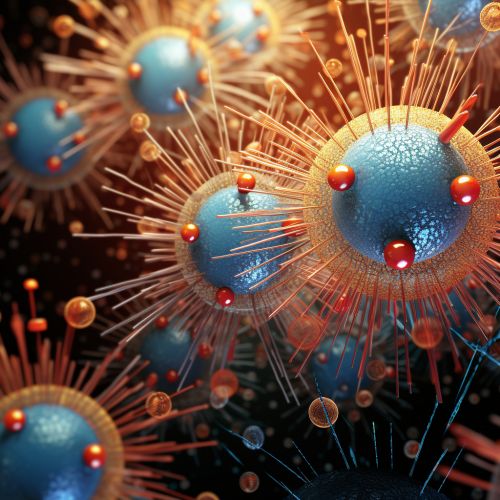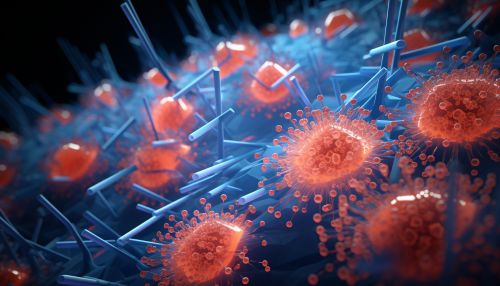Pattern Recognition Receptor
Introduction
Pattern Recognition Receptors (PRRs) are a crucial component of the innate immune system, responsible for recognizing molecules that are broadly shared by pathogens but distinguishable from host molecules, collectively referred to as pathogen-associated molecular patterns (PAMPs). They also detect damage-associated molecular patterns (DAMPs) which are endogenous signals of cellular damage or stress.


Classification
Pattern Recognition Receptors can be broadly classified into two categories: membrane-bound PRRs and cytoplasmic PRRs.
Membrane-bound PRRs
Membrane-bound PRRs are located on the cell surface and primarily recognize extracellular PAMPs. They include Toll-like receptors (TLRs) and C-type lectin receptors (CLRs).
Toll-like receptors
Toll-like receptors (TLRs) are a type of PRR that play a key role in the innate immune system. They are single, membrane-spanning, non-catalytic receptors usually expressed in sentinel cells such as macrophages and dendritic cells, that recognize structurally conserved molecules derived from microbes.
C-type lectin receptors
C-type lectin receptors (CLRs) are a large superfamily of proteins, which bind to carbohydrates in a calcium-dependent manner. They are involved in a variety of cellular functions including cell-cell adhesion, immune response to pathogens and apoptosis.
Cytoplasmic PRRs
Cytoplasmic PRRs are located within the cytoplasm of the cell and recognize intracellular PAMPs. They include NOD-like receptors (NLRs) and RIG-I-like receptors (RLRs).
NOD-like receptors
NOD-like receptors (NLRs) are a type of PRR that are present in the cytoplasm of a cell. They are involved in the recognition of PAMPs and DAMPs and play a crucial role in the immune response.
RIG-I-like receptors
RIG-I-like receptors (RLRs) are cytoplasmic sensors of viral RNA. They play an essential role in the immune response to viral infection.
Function
The primary function of PRRs is to recognize the presence of PAMPs and DAMPs and initiate an immune response. This involves a series of steps including signal transduction, activation of transcription factors, and production of cytokines and chemokines.
Signal Transduction
Upon recognition of PAMPs or DAMPs, PRRs undergo a conformational change that initiates a signal transduction pathway. This involves a series of phosphorylation events that lead to the activation of transcription factors.
Activation of Transcription Factors
The signal transduction pathway leads to the activation of transcription factors such as nuclear factor kappa B (NF-κB) and interferon regulatory factors (IRFs). These transcription factors regulate the expression of genes involved in the immune response.
Production of Cytokines and Chemokines
Activated transcription factors induce the production of cytokines and chemokines. These molecules play a crucial role in the immune response by recruiting immune cells to the site of infection and activating other immune responses.
Clinical Significance
PRRs play a crucial role in the immune response to infection. However, dysregulation of PRR signaling can lead to a variety of diseases including autoimmune diseases, chronic inflammatory diseases, and cancer.
Autoimmune Diseases
In autoimmune diseases, the immune system mistakenly targets the body's own cells. This can be caused by an overactive PRR response to self-DAMPs.
Chronic Inflammatory Diseases
Chronic inflammatory diseases such as rheumatoid arthritis and inflammatory bowel disease can be caused by an overactive PRR response to PAMPs or DAMPs. This leads to a chronic inflammatory response that damages the body's own tissues.
Cancer
PRRs also play a role in cancer. Some cancers can evade the immune system by downregulating PRR expression or signaling. On the other hand, chronic inflammation caused by an overactive PRR response can also contribute to the development of cancer.
